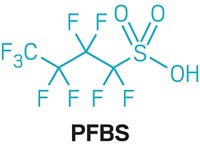Advertisement
Grab your lab coat. Let's get started
Welcome!
Welcome!
Create an account below to get 6 C&EN articles per month, receive newsletters and more - all free.
It seems this is your first time logging in online. Please enter the following information to continue.
As an ACS member you automatically get access to this site. All we need is few more details to create your reading experience.
Not you? Sign in with a different account.
Not you? Sign in with a different account.
ERROR 1
ERROR 1
ERROR 2
ERROR 2
ERROR 2
ERROR 2
ERROR 2
Password and Confirm password must match.
If you have an ACS member number, please enter it here so we can link this account to your membership. (optional)
ERROR 2
ACS values your privacy. By submitting your information, you are gaining access to C&EN and subscribing to our weekly newsletter. We use the information you provide to make your reading experience better, and we will never sell your data to third party members.
Persistent Pollutants
US EPA removing two PFAS from list of safer ingredients
Agency also warns companies about fluorinated containers
by Cheryl Hogue
March 17, 2022
![Chemical structure of 1-propanaminium, N-(carboxymethyl)-N,N-dimethyl-3-[[(3,3,4,4,5,5,6,6,7,7,8,8,8-tridecafluorooctyl)sulfonyl]amino]-, inner salt Chemical structure of 1-propanaminium, N-(carboxymethyl)-N,N-dimethyl-3-[[(3,3,4,4,5,5,6,6,7,7,8,8,8-tridecafluorooctyl)sulfonyl]amino]-, inner salt](https://s7d1.scene7.com/is/image/CENODS/20220317lnp2-cas?$responsive$&wid=700&qlt=90,0&resMode=sharp2)
The US Environmental Protection Agency is removing two per- and polyfluoroalkyl substances (PFAS) from its list of safer ingredients for consumer and commercial products.
PFAS are environmentally persistent synthetic compounds, some of which are toxic. Thousands of PFAS are used widely in society, valued for their ability to withstand extreme conditions and to repel water and grease.
The EPA placed the two affected PFAS on its Safer Chemical Ingredients List in 2012 based on the toxicity data it had at the time, the agency says in a March 16 emailed statement.
Products made only with ingredients on that list can qualify for the EPA’s Safer Choice certification and label. Certification indicates that a product contains chemicals that the agency deems to be safer for human health and the environment than most other substances that serve the same function, such as controlling the formation of foam.
As part of the plans of President Joe Biden’s administration to control PFAS pollution on multiple fronts, the EPA recently reviewed the list of safer ingredients and decided to strike two substances from it.
One of the chemicals, which the EPA describes generically as an amphoteric fluorinated surfactant, is 1-propanaminium, N-(carboxymethyl)-N,N-dimethyl-3-[[(3,3,4,4,5,5,6,6,7,7,8,8,8-tridecafluorooctyl)sulfonyl]amino]-, inner salt (CAS number 449177-94-0, shown). The other is identified only by its CAS number, 452080-67-0, which the CAS record describes as boron, trifluoro(tetrahydrofuran)-, (T-4)-, polymer with 3-methyl-3-[(2,2,3,3,3-pentafluoropropoxy)methyl]oxetane, ether with 2,2-dimethyl-1,3-propanediol (2:1), bis(hydrogen sulfate), diammonium salt. On the safer ingredients list, the agency classifies both as specialized industrial chemicals.
Starting immediately, neither substance can be used in products that are candidates for the Safer Choice label, the EPA says. Also, products that are already certified for Safer Choice and contain either of these PFAS must be reformulated. Alternatively, companies can provide health and safety data to the EPA indicating either substance should remain on the safer ingredients list. The agency intends to strike both substances from the list in March 2023.
In a related action, the EPA warned companies that the presence of PFAS formed as a byproduct when some plastic containers are treated with fluorine gas could violate federal law. The admonition affects makers, processors, distributors, and users of containers made of high-density polyethylene and similar plastics, such as fluorinated polyolefins. It also applies to businesses that dispose of these containers.
Fluorine treatment increases the stability of plastic containers and can make them less permeable, reactive, and dissolvable, according to the EPA. But formation of certain long-chain perfluoroalkyl caroboxylates in or on plastic as a result of this treatment could violate regulations under the Toxic Substances Control Act that govern manufacture of PFAS, the agency says.
The agency said last year that fluorine-treated plastic containers could be widespread sources of PFAS in the environment. This came after PFAS were discovered in aerially applied mosquito spray formulated without these chemicals and distributed in fluorinated containers.
Likewise, the US Food and Drug Administration last August warned manufacturers that they can only use fluorine gas in the presence of nitrogen to modify the surface of a molded polyethylene container used to store food. “We are currently exploring options to determine the extent to which fluorinated polyethene containers are currently used in food contact applications,” an FDA spokesperson tells C&EN in an email.





Join the conversation
Contact the reporter
Submit a Letter to the Editor for publication
Engage with us on Twitter